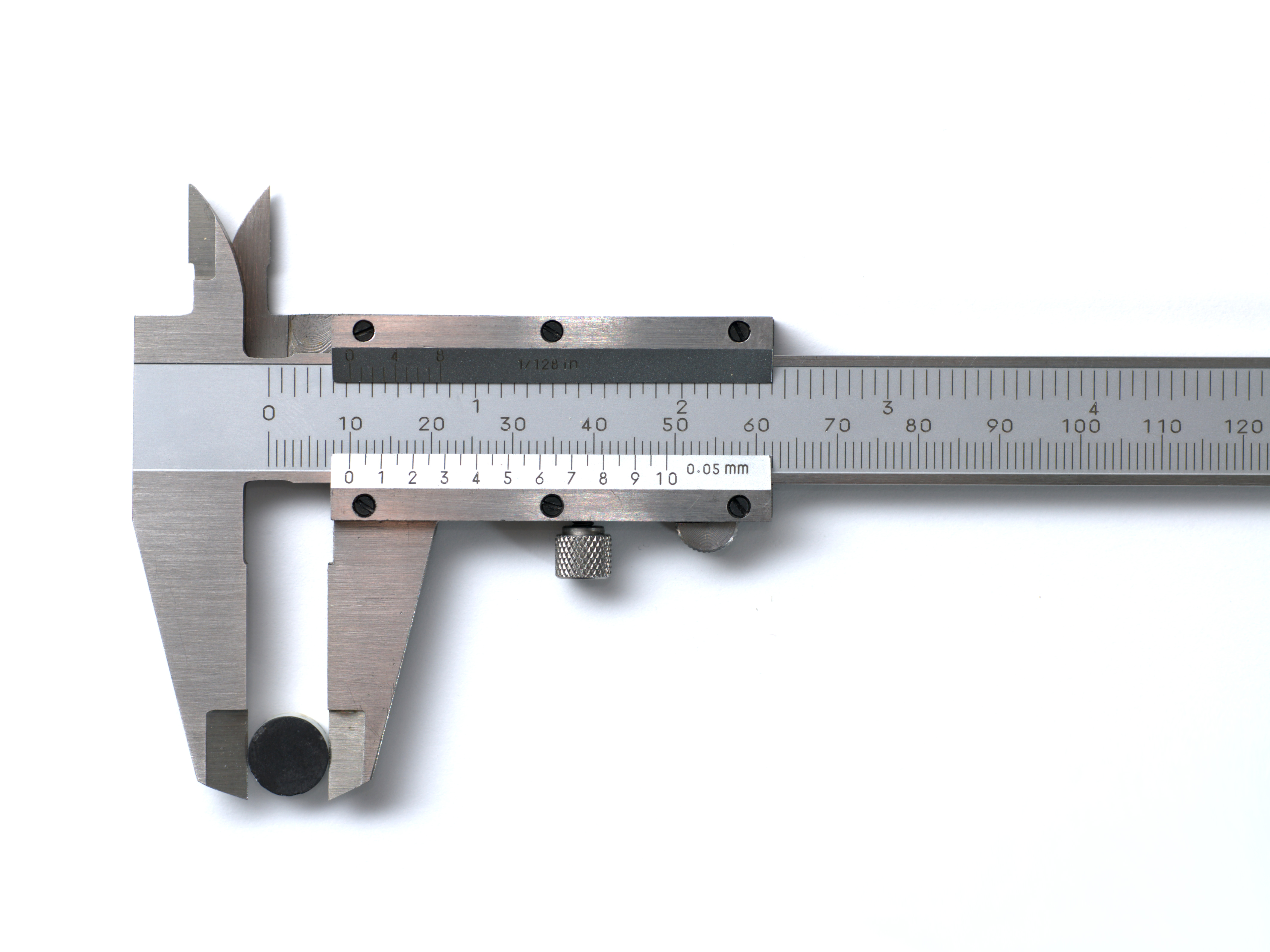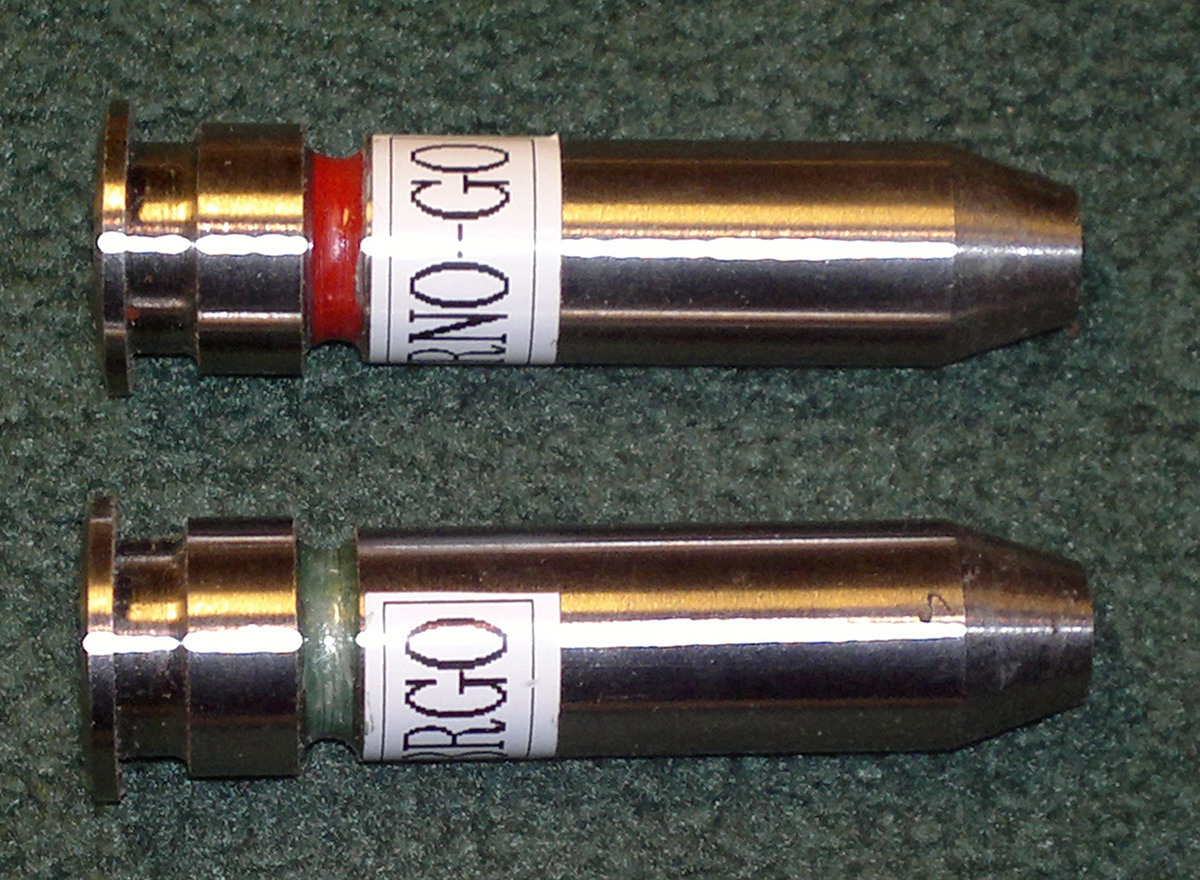|
Bore Gauge
A bore gauge is a collective term for the tools that are unique to the process of accurately measuring holes. Transfer gauges Telescopic gauges These are a range of gauges that are used to measure a bore's size, by transferring the internal dimension to a remote measuring tool. They are a direct equivalent of inside calipers and require the operator to develop the correct ''feel'' to obtain repeatable results. The gauges are ''locked'' by twisting the knurled end of the handles, this action is performed to exert a small amount of friction on the telescopic portions of the gauge (the smaller diameter rods found at the T head of the gauge). To use, the gauge is inserted at a slight angle to the bore and gently locked to a size slightly larger than the bore while at that angle. Then, rocking the handle side-to-side, slowly move the handle across the bore to the other side. The rocking will first align the gauge with the bore axis and the act of moving the handle to the other s ... [...More Info...] [...Related Items...] OR: [Wikipedia] [Google] [Baidu] |
Caliper
A caliper (British spelling also calliper, or in plurale tantum sense a pair of calipers) is a device used to measure the dimensions of an object. Many types of calipers permit reading out a measurement on a ruled scale, a dial, or a digital display. Some calipers can be as simple as a compass with inward or outward-facing points, but no scale. The tips of the caliper are adjusted to fit across the points to be measured and the dimension read by measuring between the tips with another measuring tool, such as a ruler. It is used in many fields such as mechanical engineering, metalworking, forestry, woodworking, science and medicine. Plural vs. singular A single tool might be referred to as a "caliper" or as "calipers", like a pair of scissors or glasses (a "plural only" or ''plurale tantum'' form). In colloquial usage, the phrase "pair of verniers" or just " vernier" might refer to a vernier caliper. Colloquially these phrases can also refer to dial calipers, although they in ... [...More Info...] [...Related Items...] OR: [Wikipedia] [Google] [Baidu] |
Knurling
Knurling is a manufacturing process, typically conducted on a lathe, whereby a pattern of straight, angled or crossed lines is rolled into the material. Etymology The terms ''knurl'' and ''knurled'' are from an earlier ''knur'' ‘knot in wood’ and the diminutive ''-le'', from Middle English ''knaur'' or ''knarre'' ‘knot in wood; twisted rock; crag’. This descends from Old English ''cnearra'' but the vowel in Middle English may have been influenced by Old Norse ''knǫrr'' ‘merchant ship’ which was known as ''cnearr'' in Old English. The modern ''gnarl'' is a back-formation of ''gnarled'' which itself is first attested in Shakespeare’s works and is apparently a variant of ''knurled''. Uses The operation is performed for producing indentations on a part of a workpiece. Knurling allows hands or fingers to get a better grip on the knurled object than would be provided by the originally smooth metal surface. Occasionally, the knurled pattern is a series of straight ... [...More Info...] [...Related Items...] OR: [Wikipedia] [Google] [Baidu] |
Micrometer (device)
A micrometer, sometimes known as a micrometer screw gauge, is a device incorporating a calibrated screw widely used for accurate measurement of components in mechanical engineering and machining as well as most mechanical trades, along with other metrological instruments such as dial, vernier, and digital calipers. Micrometers are usually, but not always, in the form of calipers (opposing ends joined by a frame). The spindle is a very accurately machined screw and the object to be measured is placed between the spindle and the anvil. The spindle is moved by turning the ratchet knob or thimble until the object to be measured is lightly touched by both the spindle and the anvil. Micrometers are also used in telescopes or microscopes to measure the apparent diameter of celestial bodies or microscopic objects. The micrometer used with a telescope was invented about 1638 by William Gascoigne, an English astronomer. History The word ''micrometer'' is a neoclassical coinage ... [...More Info...] [...Related Items...] OR: [Wikipedia] [Google] [Baidu] |
Go/no Go Gauge
A go/no-go gauge refers to an inspection tool used to check a workpiece against its allowed tolerances via a go/no-go test. Its name is derived from two tests: the check involves the workpiece having to pass one test (''go'') and fail the other (''no-go''). For example, ISO 1502 sets a standard for screw threads and gauging to test them. It establishes the attribute ''T'' as ''go'' for the major diameter and the attribute ''Z'' as ''no-go'' for the pitch diameter. The inspection tool has two threaded components. For example, there would be two female sections on a gauge to test a threaded male workpiece such as a screw. If the major diameter of a screw is too large, it will not fit in the ''T'' test thread at all (fail). If the major diameter is too small, the fit is sloppy (fail). If the thread has been cut too deep, it screws into the ''Z'' test thread (fail). If it is the right size and only does about three turns, the fit is right (pass). A go/no-go gauge is an integral par ... [...More Info...] [...Related Items...] OR: [Wikipedia] [Google] [Baidu] |
Dimensional Instruments
A measuring instrument is a device to measure a physical quantity. In the physical sciences, quality assurance, and engineering, measurement is the activity of obtaining and comparing physical quantities of real-world objects and events. Established standard objects and events are used as units, and the process of measurement gives a number relating the item under study and the referenced unit of measurement. Measuring instruments, and formal test methods which define the instrument's use, are the means by which these relations of numbers are obtained. All measuring instruments are subject to varying degrees of instrument error and measurement uncertainty. These instruments may range from simple objects such as rulers and stopwatches to electron microscopes and particle accelerators. Virtual instrumentation is widely used in the development of modern measuring instruments. Time In the past, a common time measuring instrument was the sundial. Today, the usual measuring instrument ... [...More Info...] [...Related Items...] OR: [Wikipedia] [Google] [Baidu] |
Metalworking Measuring Instruments
Metalworking is the process of shaping and reshaping metals to create useful objects, parts, assemblies, and large scale structures. As a term it covers a wide and diverse range of processes, skills, and tools for producing objects on every scale: from huge ships, buildings, and bridges down to precise engine parts and delicate jewelry. The historical roots of metalworking predate recorded history; its use spans cultures, civilizations and millennia. It has evolved from shaping soft, native metals like gold with simple hand tools, through the smelting of ores and hot forging of harder metals like iron, up to highly technical modern processes such as machining and welding. It has been used as an industry, a driver of trade, individual hobbies, and in the creation of art; it can be regarded as both a science and a craft. Modern metalworking processes, though diverse and specialized, can be categorized into one of three broad areas known as forming, cutting, or joining processes. Mo ... [...More Info...] [...Related Items...] OR: [Wikipedia] [Google] [Baidu] |






